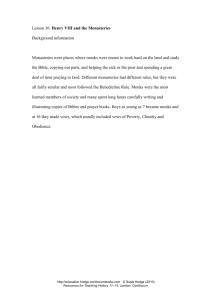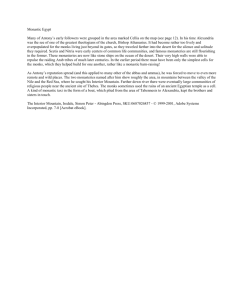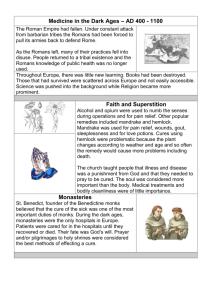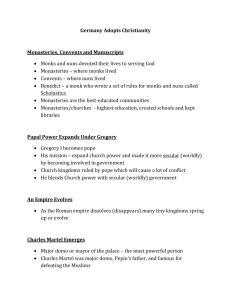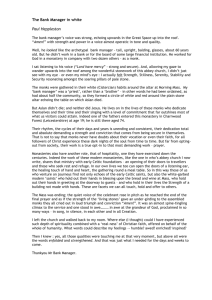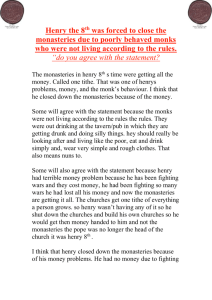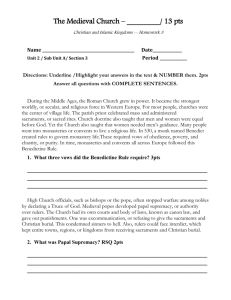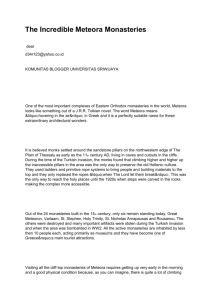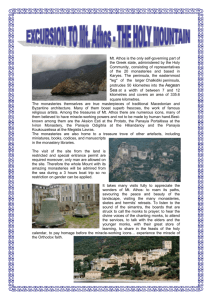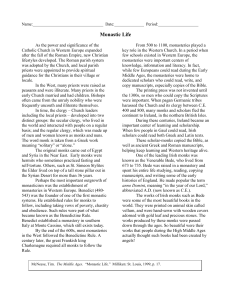Churches and Monasteries
advertisement
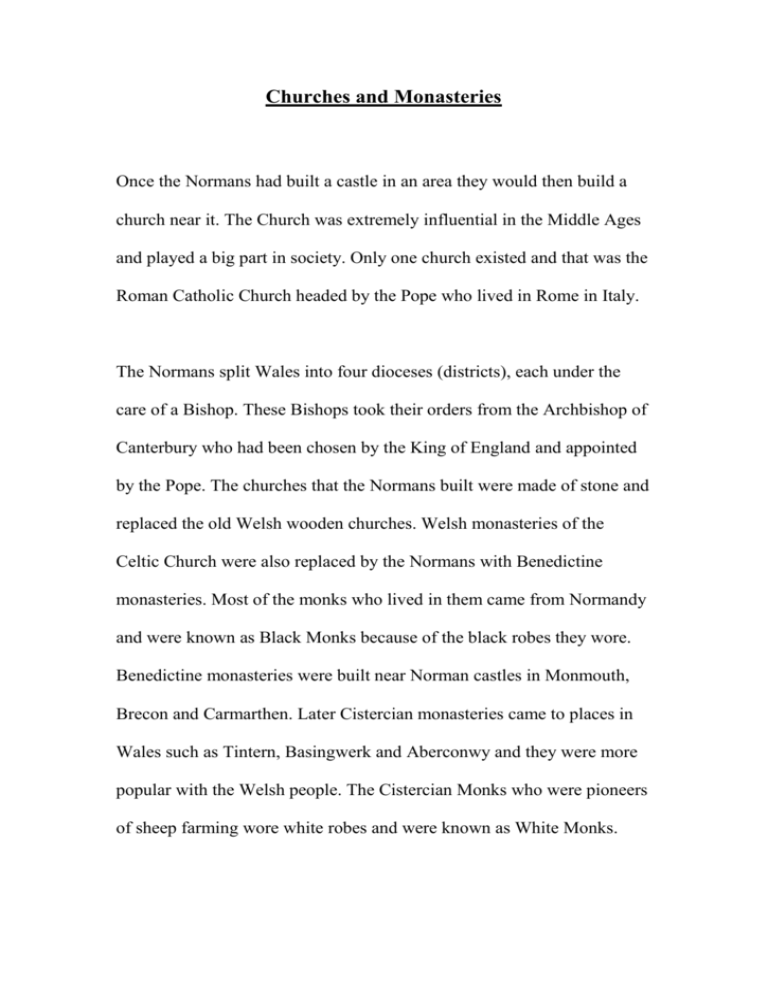
Churches and Monasteries Once the Normans had built a castle in an area they would then build a church near it. The Church was extremely influential in the Middle Ages and played a big part in society. Only one church existed and that was the Roman Catholic Church headed by the Pope who lived in Rome in Italy. The Normans split Wales into four dioceses (districts), each under the care of a Bishop. These Bishops took their orders from the Archbishop of Canterbury who had been chosen by the King of England and appointed by the Pope. The churches that the Normans built were made of stone and replaced the old Welsh wooden churches. Welsh monasteries of the Celtic Church were also replaced by the Normans with Benedictine monasteries. Most of the monks who lived in them came from Normandy and were known as Black Monks because of the black robes they wore. Benedictine monasteries were built near Norman castles in Monmouth, Brecon and Carmarthen. Later Cistercian monasteries came to places in Wales such as Tintern, Basingwerk and Aberconwy and they were more popular with the Welsh people. The Cistercian Monks who were pioneers of sheep farming wore white robes and were known as White Monks. Most monasteries in Wales were built between 1200 and 1300 and followed quite similar plans. The heart of the monastery was a church shaped like a cross. Next to that was the cloister ( a kind of covered walkway around a rectangular space). Around this would be rooms such as the chapter house, dormitories and the dining room. The monasteries followed strict rules but as they became richer so they relaxed some of their ideas.
